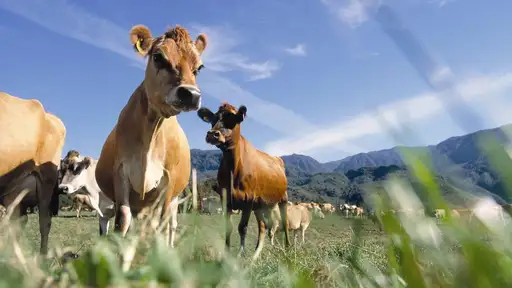A lot has changed in farming over the last 22 years since we launched the PW index in 1996, with Breeding Worth (BW) and Lactation Worth (LW).
BW has undergone a number of reviews and updates, in contrast PW has remained the same since it was introduced.
As an equally important part of an efficient, sustainable farming business, we are working to make PW more relevant for today’s farmers, and the herd improvement decisions they make in their business each day.
About the work
In 2017, we completed a review of PW. We talked to farmers, breeders, industry stakeholders and our own staff about what PW means to them, and how it could it be improved.
The review found that although PW remains a useful index for farm profitability, it needs to be updated to make it more relevant on-farm for herd improvement decisions like buying, selling and culling.
The first update – 17 February 2018
As a result of the review and the feedback we have received from our farmers, the first update was implemented to PW on 17 February with the AE run.
This update added somatic cell into the PW calculation.
Somatic cell is an ongoing consideration for farmers when it comes to culling cows and one that can have a significant impact on a cow’s health, production and reproduction. It also plays an important part in animal performance and efficiency, as cows which have ongoing issues with high somatic cells will probably still eat the same, but produce less and cost more in health treatments.
PW is a significant tool to lead culling decisions, to identify and retain the most valuable cows in your herd, but we know that many farms also review somatic cell data to help inform those decisions.
We want to make that secondary consideration seamless, by adding somatic cell into PW. The trait was added to BW in 2005.
As per the estimation of other production traits, somatic cell data will be sourced from herd testing, but from the first three lactations only.
PW as a whole, primarily focuses on information from the first three lactations so farmers can highlight the lifetime production potential of their younger cows, enabling them to make decisions on whether they should be retained in their herd or not.
Cows who are not herd tested will have an estimated somatic cell score PV based on ancestry information only (and heterosis effects if the animal is a crossbred). The associated reliability will be very low indicating the lack of available information.
New Zealand Animal Evaluation Limited (NZAEL), a wholly owned subsidiary of DairyNZ, has agreed to provide the economic values for all PW traits including somatic cell, based on the national and industry good economic models it developed and operates.
What it means for your cows
Farmers could see some changes in the PW of their cows after the update, to reflect somatic cell scores from their first three lactations.
Across all breeds, half of all cows are expected to move less than 10PW.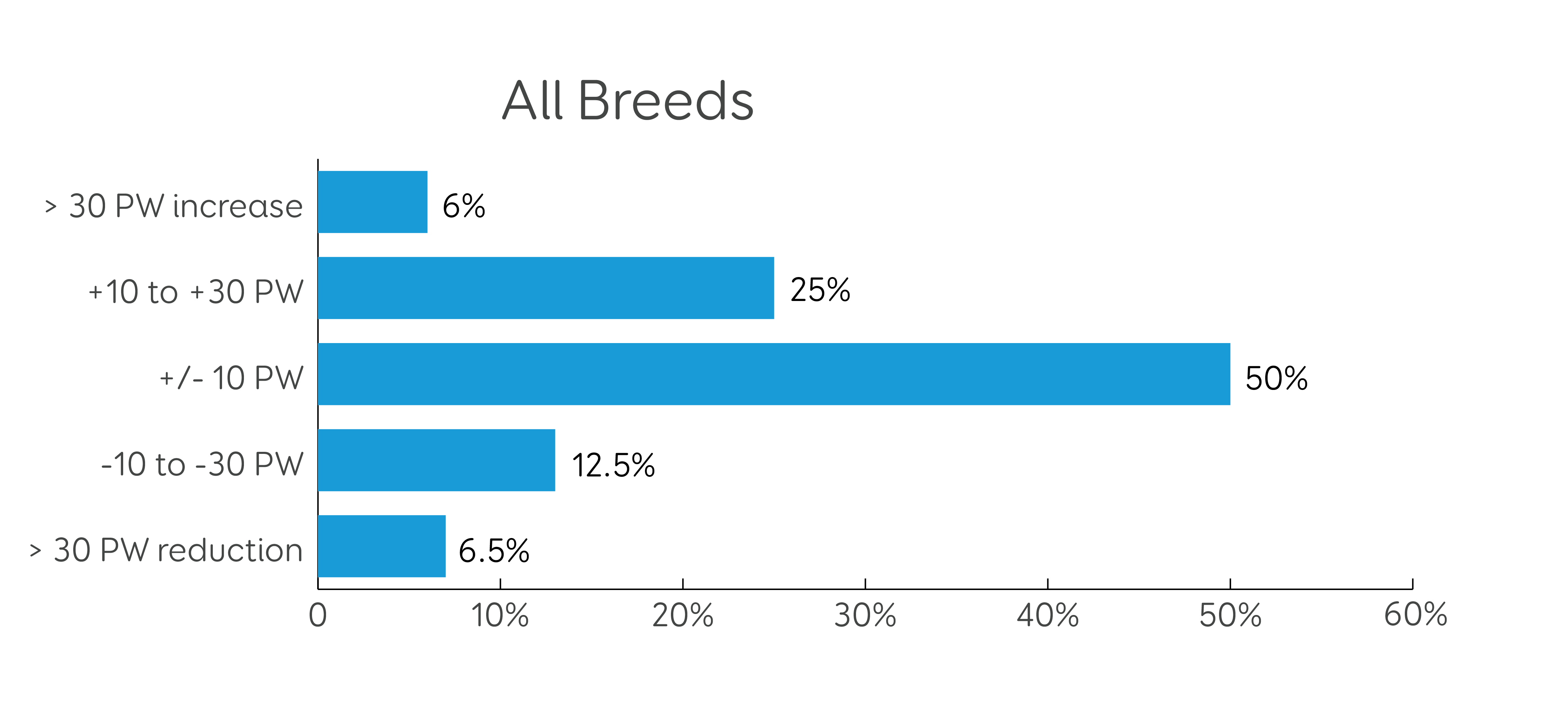 At an individual animal level, some extreme movements will be observed if high levels of Somatic Cell Counts were recorded in the earlier years of an animal’s productive life.
At an individual animal level, some extreme movements will be observed if high levels of Somatic Cell Counts were recorded in the earlier years of an animal’s productive life.
Reliability associated with the updated PW, and individual Production Values, is dependent on how much herd test data is available to use in the estimations. The more data there is available, the higher the reliability will be.
The following graphs show the anticipated movement by breed. 
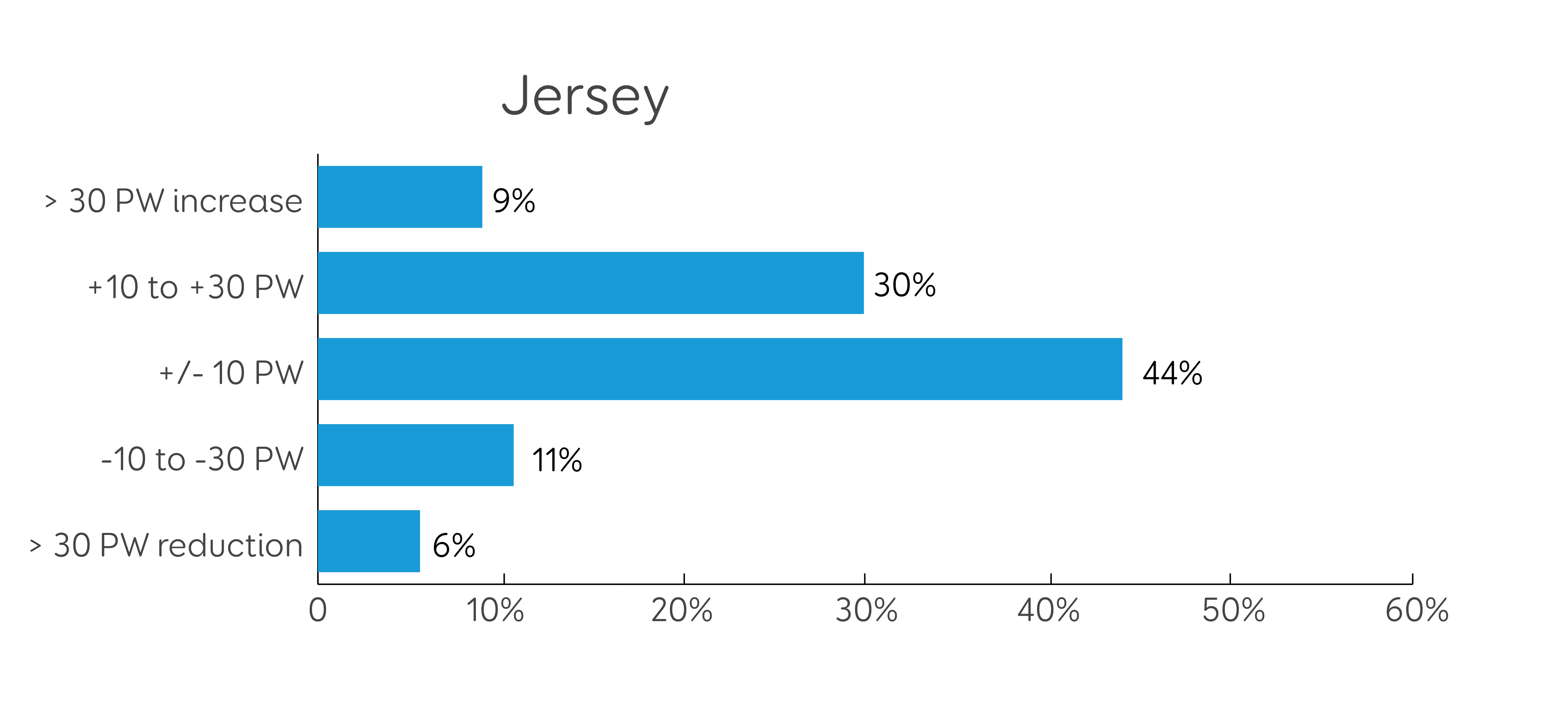
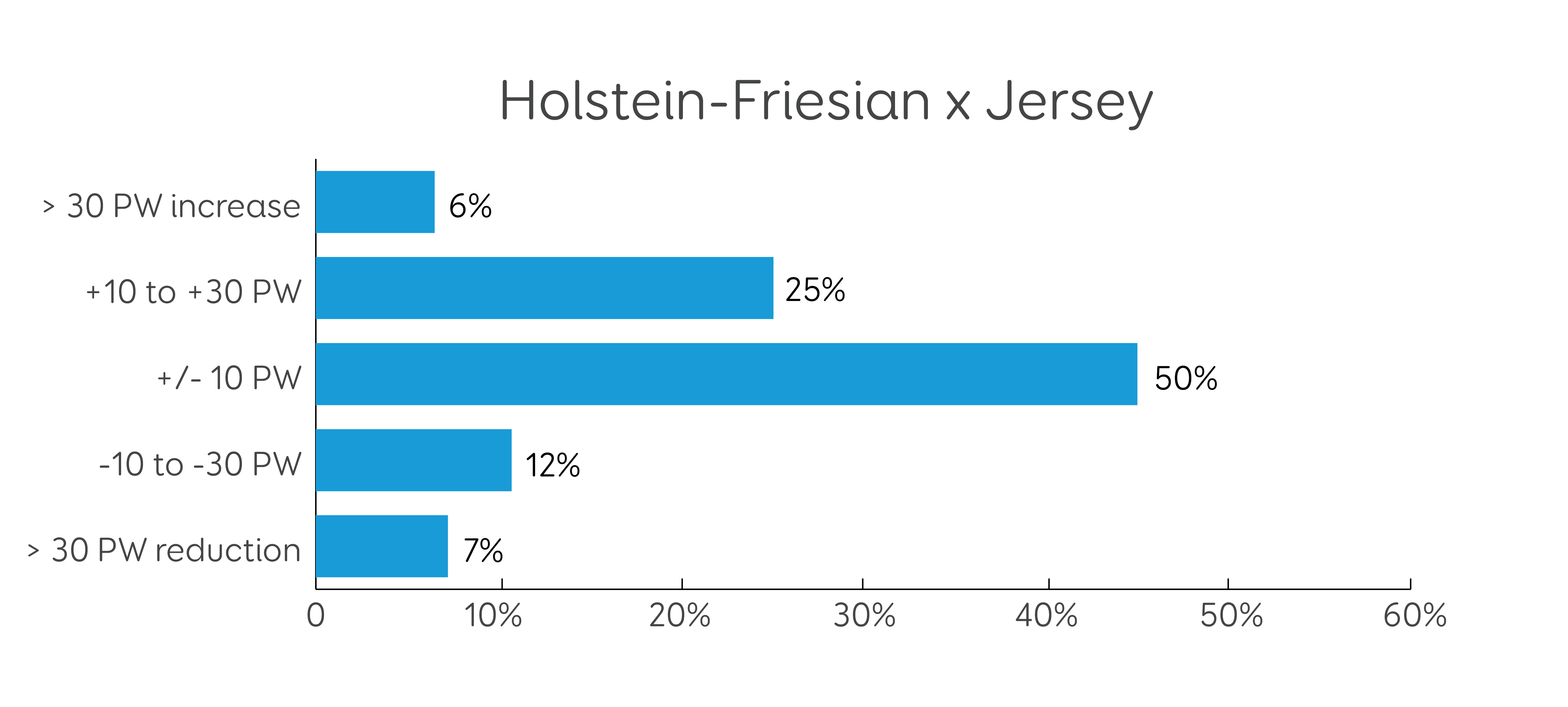
 These graphs are based on a subset of data of approximately 70,000 current cows in New Zealand
These graphs are based on a subset of data of approximately 70,000 current cows in New Zealand
The expected movement in herd PW will be less, as individual animal movements average out. 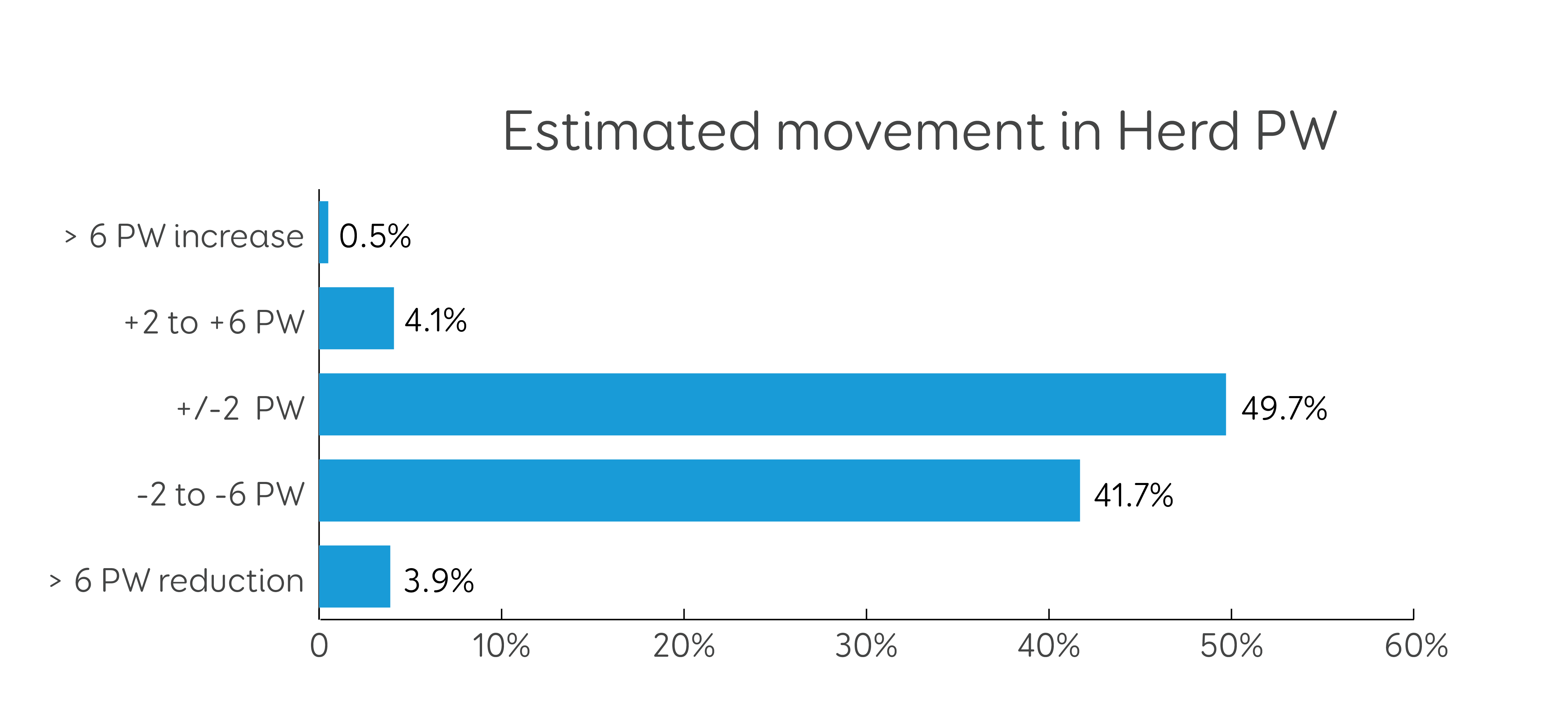
This graph is based on data from approximately 10,129 herds in New Zealand.
What's next?
Over the next 12-18 months, our work on PW will continue.
We initially looked at adding three traits into PW – somatic cell, and also fertility and body condition score (BCS). These traits have all been added to BW over the years and can significantly impact the performance of a dairy cow.
We decided to hold off on adding the fertility and BCS traits to allow further work to be done. We want to carry out more research on the best way to include phenotypic information (actual records, such as mating and calving data) for fertility and BCS, and how they should be valued in PW.
Questions
If you have questions about the work to update PW or would like to participate in any trial for this work, please contact your LIC representative, or email [email protected]



